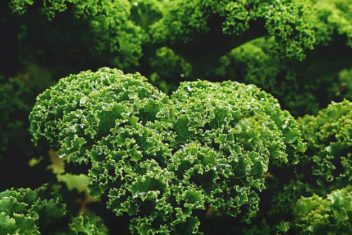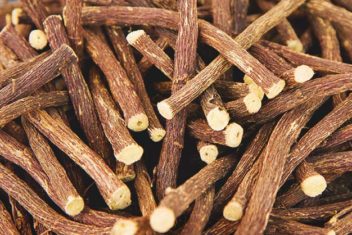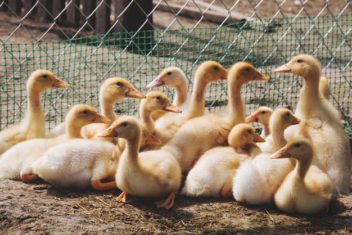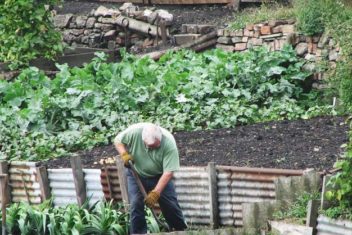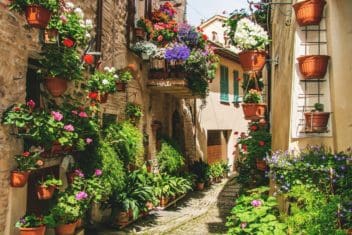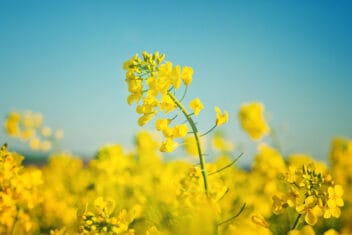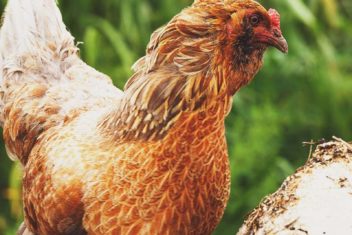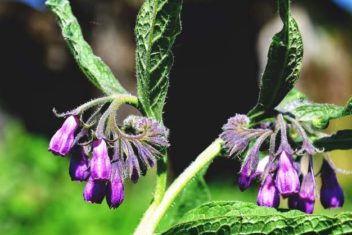When you’re walking around your property watering your plants, the last thing you want to see is a large area of weeds. Unwelcome plants like mustards, docks, and thistles can steal nutrition from your crops, harbor pests and diseases, and steal water that your crops need. That’s why you need to clear those weeds!
If you’re wondering how to clear weeds from your homestead, you’ve come to the right place. Limiting the growth of weeds is an important factor in keeping your garden healthy and protecting your plants.
So, grab yourself a cup of coffee, and settle in. Here’s everything you need to know about clearing weeds from a large area.
Why You Should Care About Weeds
To keep it simple, weeds are any type of plant growing in areas that you don’t want them to grow. A rose can be a weed if it’s sprouting right where you intended your pumpkin patch to grow. But when we talk about weeds, we typically mean invasive, introduced, or local plants that grow unchecked and compete for resources.
Here are the most important reasons to get rid of weeds:
- You might think they look ugly
- Many can cause allergies
- They can create a fire hazard
- Some weeds attract bad pests or diseases
- They compete with your crops and ornamentals for light, water, and nutrients
Most of us are familiar with the individual weeds that pop up where we don’t want them. For instance, who hasn’t battled dandelions? You’ll normally see these plants growing in your lawn or at the edges of ornamental gardens. For a stray dandelion here or there, you can just dig out the long taproot with a weed digger.
Oxalis is another common weed, and it produces small, yellow flowers. If you spot them, just dig them up like you would with dandelions.
Other Species of Weeds
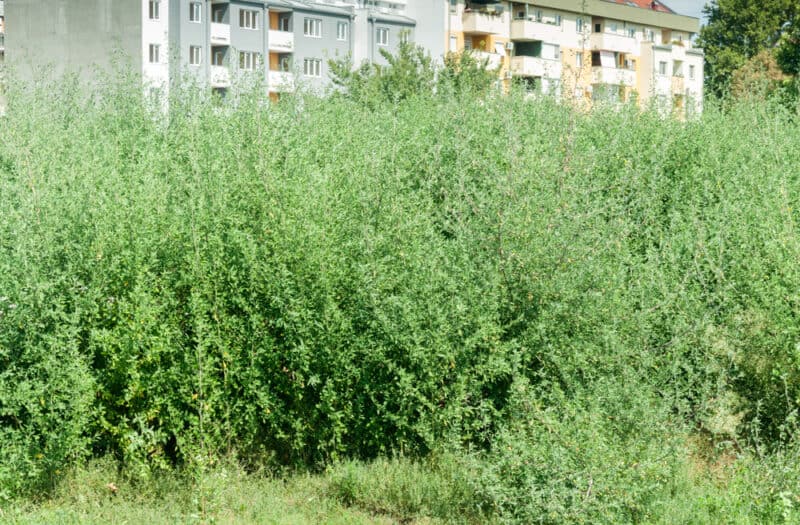
In addition to these examples of weeds, there are still other plants that you might find in your garden. Here is a list of other common weeds, though this will vary depending on where you live:
- Bindweed
- Crabgrass
- White Clover
- Nutsedge
- Creeping Charlie
- Lamb’s-Quarter
- Plantain
- Dayflower
- Purslane
- Velvetleaf
- Wild Violet
- Smartweed
- Quickweed
- Pigweed
- Canada Thistle
- Knotweed
- Pokeweed
- Punctureweed
- Poison Ivy
- Black Nightshade
- Black Medic
- Quackgrass
- Dock
- Henbit
- Fleabane
- Nettle
- Prostrate Spurge
- Chickweed
- Musk Thistle
- Ragweed
- Yellow Sweet Clover
- Yellow Salsify
Now that you have the list of weeds to be aware of in your homestead you’ll need a solution to getting rid of them. While we know how to dig out a lone plant here and there, dealing with a large patch is another matter entirely. Clearing a large area of weeds will depend on the size of the location and how many weeds have grown over time.
Most of the time, weeds grow out of control during busy times and when you can’t tend to your garden as frequently. Or you might have purchased a new property that hasn’t been kept up. It helps to have a few methods to try when you need to clear weeds.

How to Clear Weeds
If you discover that you have a lot of weeds growing and you want to clear them as soon as possible then don’t worry, these following weed clearing tips will do the trick!
1. Garden Hoe
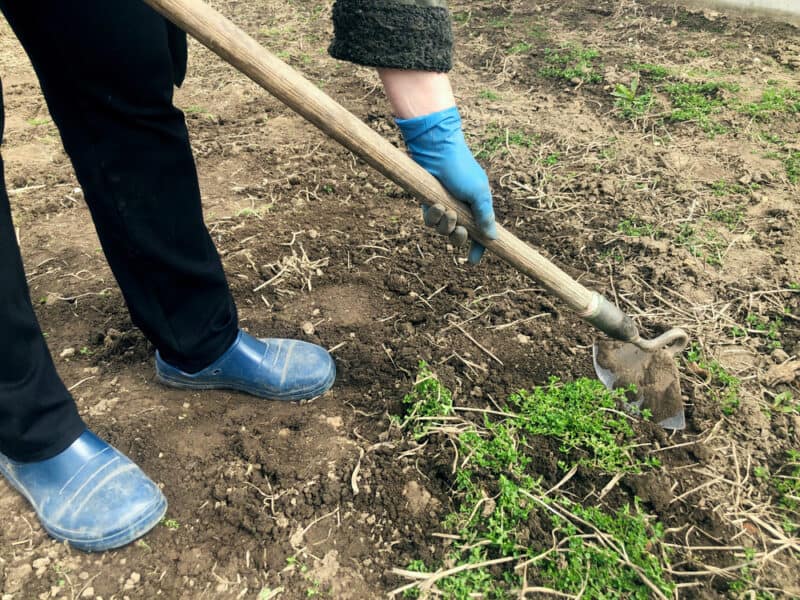
Using a garden hoe is one of the best and most efficient ways of getting rid of weeds. Plus, all you need is one tool to get the job done!
All you need to do is drag the hoe across the top of the grass or other area and gather the weeds together. A great choice for hoe is a Dutch garden hoe which makes the process quick and easy.
However, if the land is not even, this method might not work well. Plus, some weeds will just come right back if you only cut them off at the surface. If that’s the case then the next choice could be for you.
2. Weed Suppressant Barrier
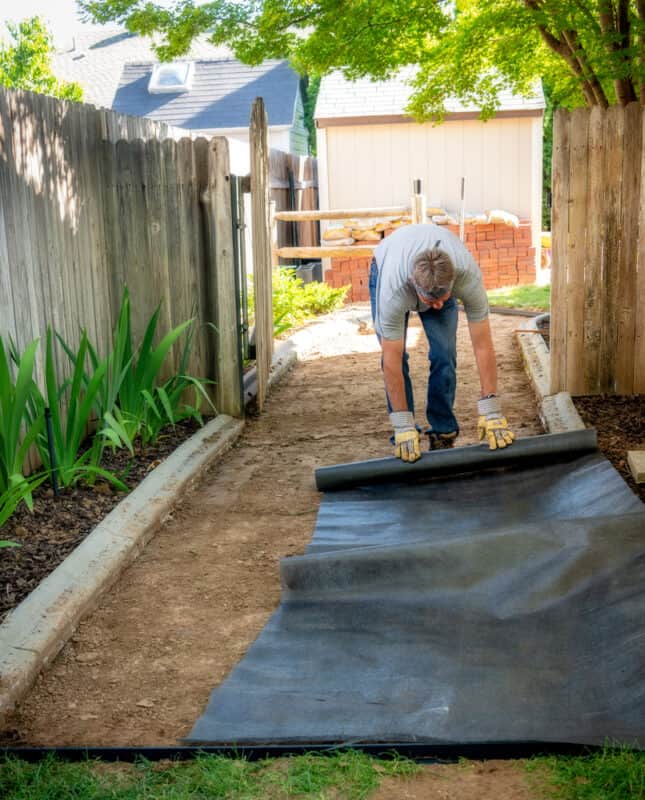
As weeds are just like any other plant that means they need certain conditions to be able to thrive and grow. A simple way to stop weeds from growing is by limiting the light exposure to the area.
That’s where a weed barrier cloth comes in. These are opaque, woven materials that you can lay across the surface of the soil. You can find this product at your local garden store or online. You could also use opaque garbage bags or tarps, instead.
This option takes the least amount of work since you just need to cover the area where the weeds are growing or might grow in the future. Secure the barrier using rocks or stakes. You can leave the cover on the ground for a whole season so you don’t need to do a lot of maintenance.
Once you’re ready to plant, remove the cover, rake up any dead plant matter, and till and amend the soil as needed.
3. Cardboard
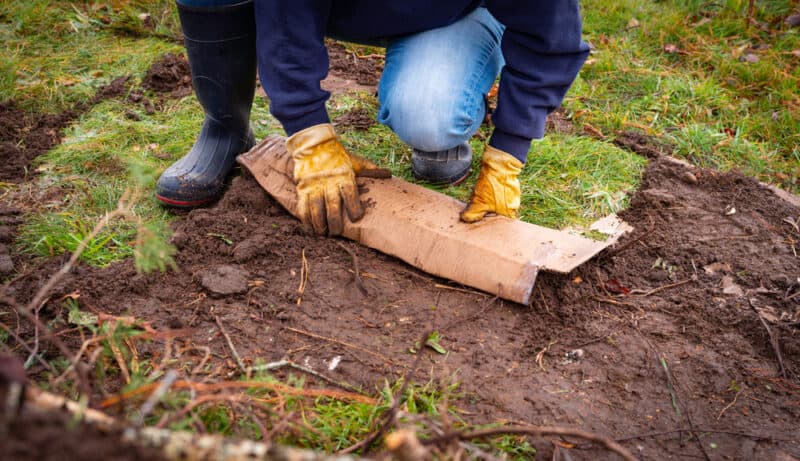
Did you know that you can use cardboard to clear weeds? In theory, cardboard works in a similar way to a suppressant weed cover. The only disadvantage of this option is that it breaks down rapidly so you may have to replace it more frequently for long-term use.
To use cardboard you start by laying the cardboard down on the ground, covering it with compost, and placing extra stones to weigh it down if you’re concerned about wind damage and the cardboard flying away. It can help to try to hoe up any existing weeds before you put any kind of cover in place.
4. Weed Torch
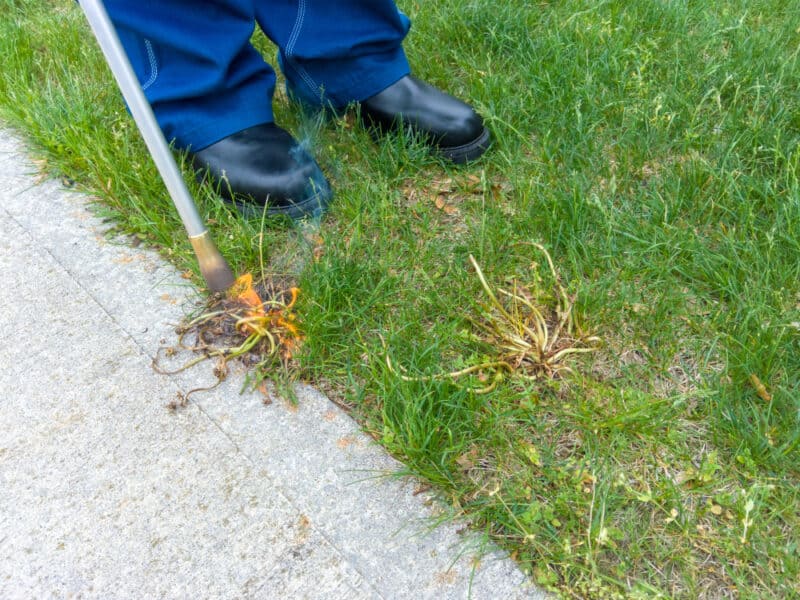
If you want a powerful, efficient option, a weed torch is the way to go.
A weed torch can be powered by electricity or gas and it creates a flame that you aim at the weeds in question. The flame heats up the plant’s cells, causing them to burst. This kills the aboveground parts of the plant, starving the roots of nutrients and water.
This is usually enough to kill most plants, though some weeds have deep roots that may regenerate. I’ve torched dandelions only to have them return a few weeks later.
This isn’t a good option if you live in a dry, drought-prone area unless you only use it during the wetter times of the year. Many people have started wildfires or housefires using weed torches incorrectly.
5. Weed Killer
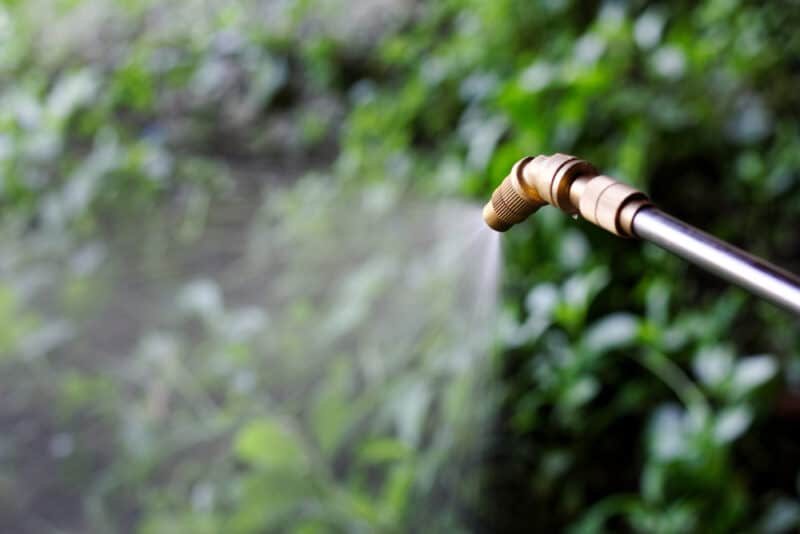
Of course, a classic option for clearing weeds is using a chemical weed killer. Even though these products can be harmful to the environment because of the chemicals involved, there are also options for more Earth-friendly solutions that you can use on the ground.
Roundup is a chemical-heavy option, but it is the go-to for many gardeners because it works well. You can also purchase or make vinegar-based killers, though they tend to require multiple applications because they aren’t as effective.
6. Hand Picking
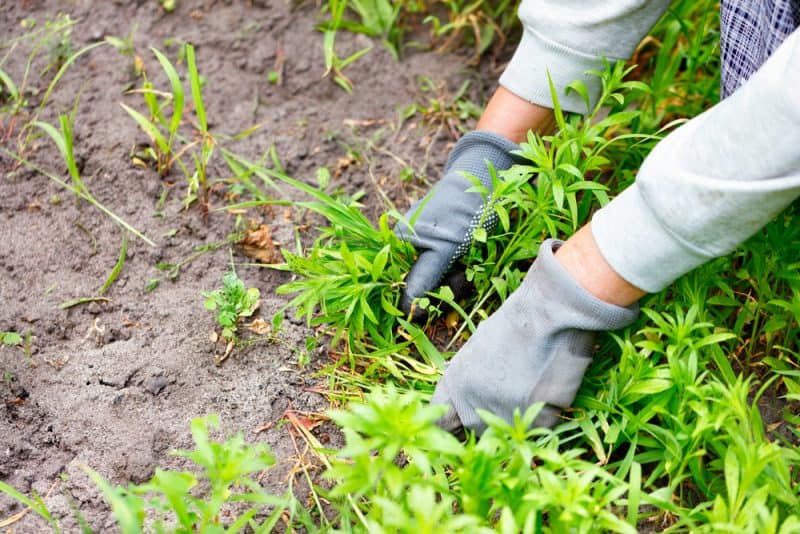
You can always dedicate some time and pick the weeds by hand. Although this way takes a lot more time and effort, it could be a worthwhile option to consider if you want an approach that is less indiscriminate and better for the environment.
Depending on how large the area is, you might need to enlist some help. Why not pay the kids to help you out? Or call over the neighbors and feed them barbecue as they work?
You can find lots of tools to make this process easier, including the aforementioned weed digger, weed pullers, weed cutters, and weed claws.
7. Livestock Helpers
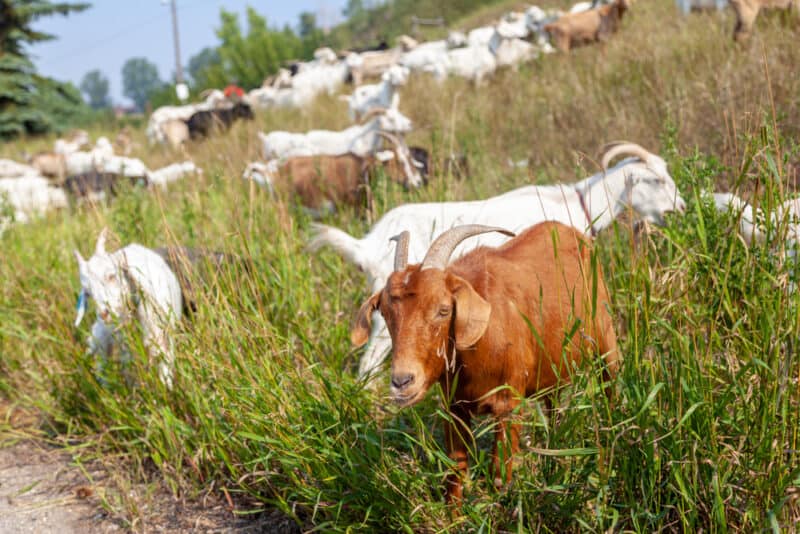
Livestock can be fantastic in the battle against weeds. Goats, for instance, will devour a massive amount of weeds in a short time. If you don’t have goats of your own, you can rent them! Chickens will also scratch the ground and even eat some weeds.
You can create a barrier to guide your livestock to exactly where you want them to work, or just let them loose in the garden to prep the area. The poop they leave behind is an added bonus because it adds nutrients to the soil.
8. Steam Power
If using flame makes you a bit nervous, steam is another option. A hot stream of steam does the same thing that a flame weeder does, vaporizing the cells of the plant. You can buy or rent steamers to clear out a large area of weeds. This is an excellent option if you have pets or kids, since it doesn’t involve chemicals or fire.
9. Solarization
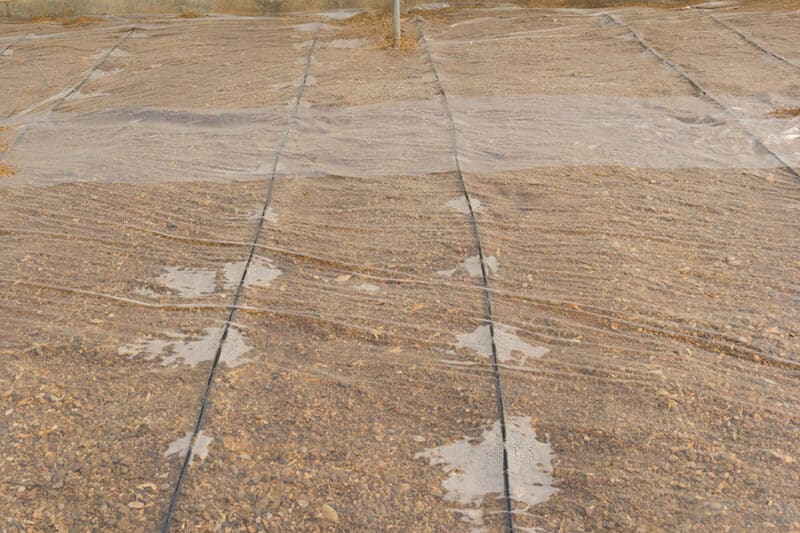
Soil solarization involves heating up an area of soil using the power of the sun. This kills off weeds and bad pathogens all at the same time. It can also kill the good stuff in the soil, so it’s not the best option if you’re only worried about some weeds. One of the less invasive options is better for that.
But if you want to prepare a large area by killing all the weeds and getting rid of any bad fungi or bacteria in the soil, it’s an excellent option. Our guide can walk you through the process.
Reasons to Keep Weeds
There’s a common misconception about having weeds on your property, and that is that they’re toxic. Some weeds might be poisonous, but so are many plants that we buy and cultivate. Rhododendrons and yews, for instance, are incredibly toxic. So long as you aren’t eating or touching weeds that cause skin reactions, you don’t need to stress.
Plus, there are some good reasons that having weeds in your garden. For instance, they’re beneficial for wildlife.
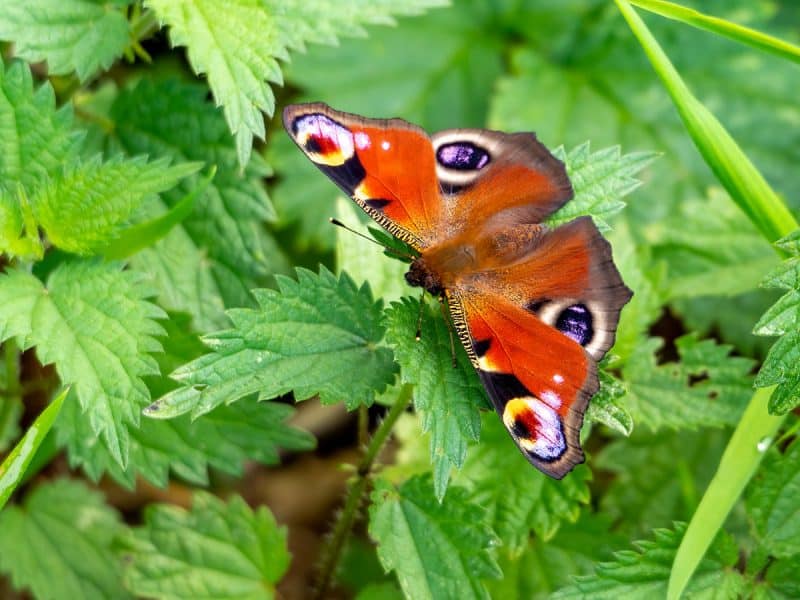
Some weeds attract beneficial insects and pollinators. Birds and bats rely on weeds for food and to act as housing for the critters that they eat.
In addition to being good for wildlife, some weeds are also useful for herbal remedies or in the kitchen. For example, you can use dandelion, chickweed, and stinging nettle in lots of different recipes.
You might even learn to love the look of some weeds, especially those with flowers. Instead of planting lots of different ornamentals, you can use nature to its advantage and allow the beautiful weeds to grow!

